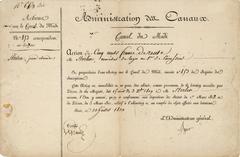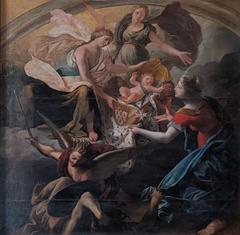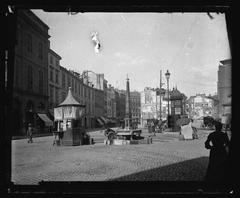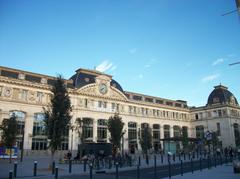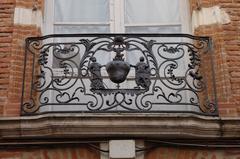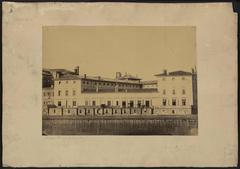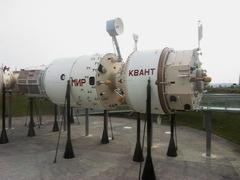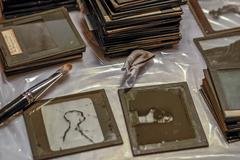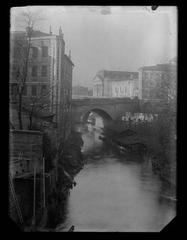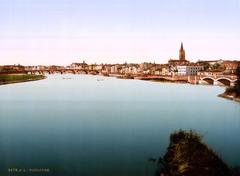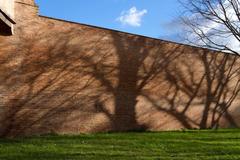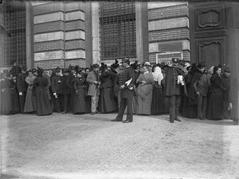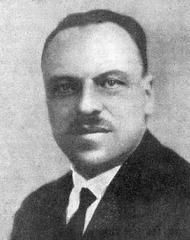Route Nationale 632 Toulouse: Visiting Hours, Tickets, and Comprehensive Travel Guide
Date: 14/06/2025
Introduction
Route Nationale 632 (RN 632) is a scenic and historically significant corridor in southwestern France, tracing a path from the vibrant city of Toulouse through the rolling landscapes of the Gers department and toward the Pyrenean foothills. This route is a gateway to both Toulouse’s rich heritage and the rural traditions of Gascony, offering travelers a blend of urban landmarks, charming towns, and natural beauty. RN 632 is renowned for its accessibility, diverse attractions, and its connection to key sites such as the Canal du Midi, Basilique Saint-Sernin, and bustling local markets. This guide covers RN 632’s history, cultural significance, main sights, visitor logistics, travel tips, and practical FAQs to ensure a rewarding journey through this captivating region.
For planning assistance, consult the Toulouse Tourist Office and Toulouse Tourisme.
Table of Contents
- Introduction
- Historical Overview
- Highlights Along RN 632
- Practical Visitor Information
- FAQs
- Nearby Excursions
- Summary and Additional Resources
Historical Overview
Early Origins and Development
RN 632’s lineage is rooted in Toulouse’s evolution from a Roman settlement (Tolosa) through centuries of growth as a commercial, pilgrimage, and cultural hub. While not a direct descendant of a Roman road, RN 632 has long facilitated regional trade and travel, supporting both medieval pilgrimage routes—like the Camino de Santiago—and the Renaissance pastel (woad) trade.
Modernization and Urban Role
With Napoleonic reforms in the 19th century, RN 632 was incorporated into France’s national road network, enhancing connections between Toulouse and the Gascon countryside. Though the advent of the railway shifted some traffic, RN 632 remained vital for local movement and commerce. Today, its urban segment within Toulouse—now often marked as M632 or D632—serves as a key arterial route, supporting the city’s economic, industrial, and tourism sectors (Wikimonde).
Highlights Along RN 632
Toulouse’s Urban Attractions
- Place du Capitole: Toulouse’s central square, renowned for its neoclassical architecture, vibrant atmosphere, and cultural events. Free and open year-round (Toulouse Tourisme).
- Basilique Saint-Sernin: Europe’s largest Romanesque church and a UNESCO World Heritage Site, open daily from 7:00 AM to 7:00 PM, with free entry (Lonely Planet).
- Canal du Midi: A UNESCO-listed canal offering picturesque walks, cycling routes, and boat rentals. Access is free; boat hire available seasonally.
- Cité de l’Espace: Major science museum celebrating Toulouse’s aerospace heritage, open Tuesday to Sunday, 10:00 AM–6:00 PM; adults €25, children €18 (Toulouse Tourisme).
- Les Abattoirs: Museum of modern and contemporary art, Tuesday to Sunday, 11:00 AM–6:00 PM; general admission €8.
- Place du Capitole and Rue du Taur: Bustling squares and streets for shopping, dining, and enjoying local architecture.
Gascon Towns and Rural Landscapes
- L’Isle-Jourdain: Noted for markets and the European Bell Museum (Tuesday–Sunday, 10:00 AM–6:00 PM; ~€5).
- Gimont: Famous for foie gras and weekly markets.
- Auch: Gascony’s historic capital, featuring the Cathédrale Sainte-Marie (free entry, open daily).
- Samatan and Boulogne-sur-Gesse: Traditional markets, local gastronomy, and scenic countryside (Itineraires France).
Practical Visitor Information
Visiting Hours and Admission
- RN 632: As a public road, open at all times with no tolls or entry fees.
- Monuments and Museums: Each site has its own operating hours—typically 9:00/10:00 AM to 6:00 PM. Some, like the Basilique Saint-Sernin, are free to enter; museums and guided tours may require tickets.
- Markets: Held weekly, usually in the morning; check local schedules.
Transportation and Accessibility
- By Car: The most flexible way to explore; RN 632/D632 is well-maintained with clear signage.
- By Public Transport: Regional buses connect Toulouse with towns along RN 632; check schedules in advance.
- Cycling: Popular, especially along Canal du Midi and urban segments; rentals available in Toulouse (The World Was Here First).
- On Foot: Toulouse’s city center is highly walkable, with pedestrianized zones around major landmarks.
Travel Tips and Guided Tours
- Best Visiting Seasons: Spring (April–June) and autumn (September–October) for mild weather and festivals (Toulouse Secret).
- Local Cuisine: Sample cassoulet, foie gras, and Gâteau du Fénétra at cafés and markets along the route (PlanetWare).
- Guided Tours: Bookable through the Toulouse Tourist Office. Options include walking tours, cycling excursions, and culinary experiences.
- Accessibility: Most city attractions are accessible; rural sites may have limited facilities. Consult the official tourism site for details.
Frequently Asked Questions (FAQ)
Q: Is there an entrance fee for RN 632?
A: RN 632 is a public road and free to use. Some attractions along the route may require tickets.
Q: Are guided tours available?
A: Yes, guided tours of Toulouse’s historical sites and the surrounding countryside are available—book in advance during peak seasons.
Q: Is RN 632 suitable for cyclists?
A: Urban and canal-side segments are cyclist-friendly; rural portions require caution due to traffic.
Q: What is the best way to explore RN 632 without a car?
A: Regional buses and cycling are viable alternatives, especially near Toulouse.
Q: When are local markets held?
A: Market days vary by town; typically mornings, with Samatan’s market on Mondays and Saint Aubin Market in Toulouse on Sundays.
Nearby Excursions
- Carcassonne: Medieval walled city, UNESCO site, approx. 1 hour from Toulouse (PlanetWare).
- Albi: Renowned for its cathedral and the Toulouse-Lautrec Museum, about 80 km north.
- The Pyrenees: Accessible for hiking, skiing, and scenic drives west of Toulouse.
Practical City Tips: Toulouse and RN 632
- Arrival & Transport: Toulouse-Blagnac Airport and Matabiau rail station provide easy access (Lonely Planet).
- Public Transit: Metro, bus, and tram lines cover the city; VélôToulouse bike rentals are convenient and eco-friendly.
- Parking: Scarce and costly in the city center—use public transport or bikes when possible.
- Safety: Standard urban precautions apply; rural roads may have slow-moving farm vehicles.
- Language: French is predominant, but English is widely understood in tourist zones.
- Accessibility: Most city attractions and transport are accessible; check in advance for rural sites (Toulouse Tourisme).
Summary & Final Tips
Traveling RN 632 from Toulouse weaves together centuries of history, architectural wonders, dynamic city life, and the rustic charm of Gascony. The route’s combination of renowned monuments—Place du Capitole, Basilique Saint-Sernin, Canal du Midi—and rural markets, local cuisine, and vibrant festivals ensures an immersive experience for all kinds of travelers. Plan ahead for museum hours, market days, and seasonal events, and take advantage of public transport, cycling routes, and guided tours for a smooth and memorable visit.
For the latest updates, event calendars, and interactive resources—including self-guided audio tours—visit the official Toulouse tourism website and consider downloading the Audiala mobile app.
Sources and Further Reading
- Route Nationale 632: Visiting Hours, History, and Toulouse’s Historical Sites Guide, Audiala
- France Voyage: Toulous Tourist Office
- Toulouse Tourisme: What to See and Do
- Lonely Planet: Toulouse
- Wikimonde: Route nationale 632
- Toulouse Secret: Festivals
- Discover Walks: Toulouse
- Taste of Toulouse: Top Tourist Attractions
- PlanetWare: Toulouse Attractions
- Itineraires France: D632 Route Guide
- The World Was Here First: Toulouse Itinerary
- BeeLovedCity: Things to Do in Toulouse

